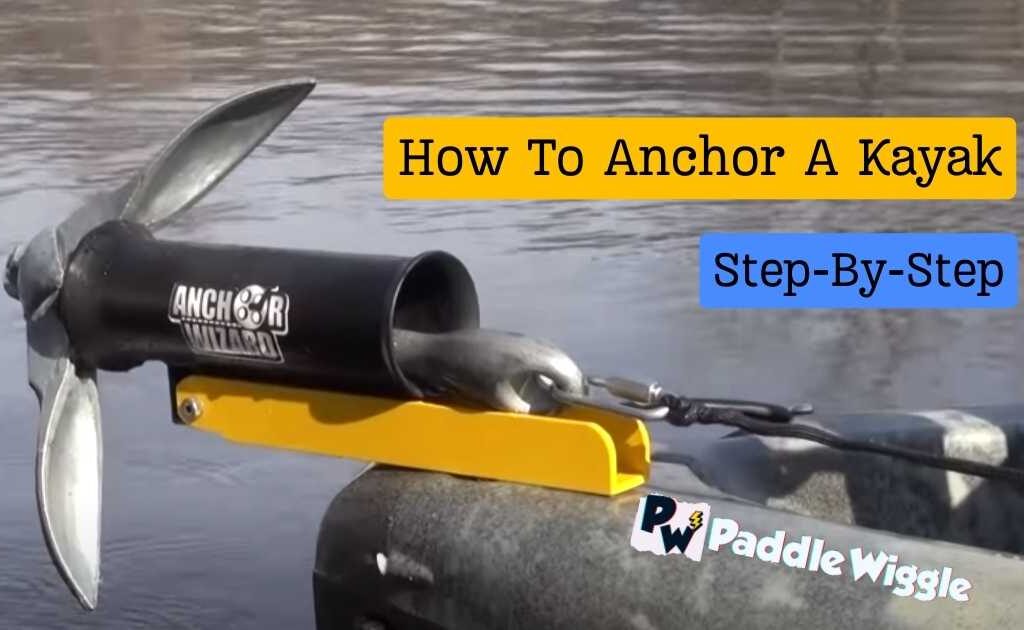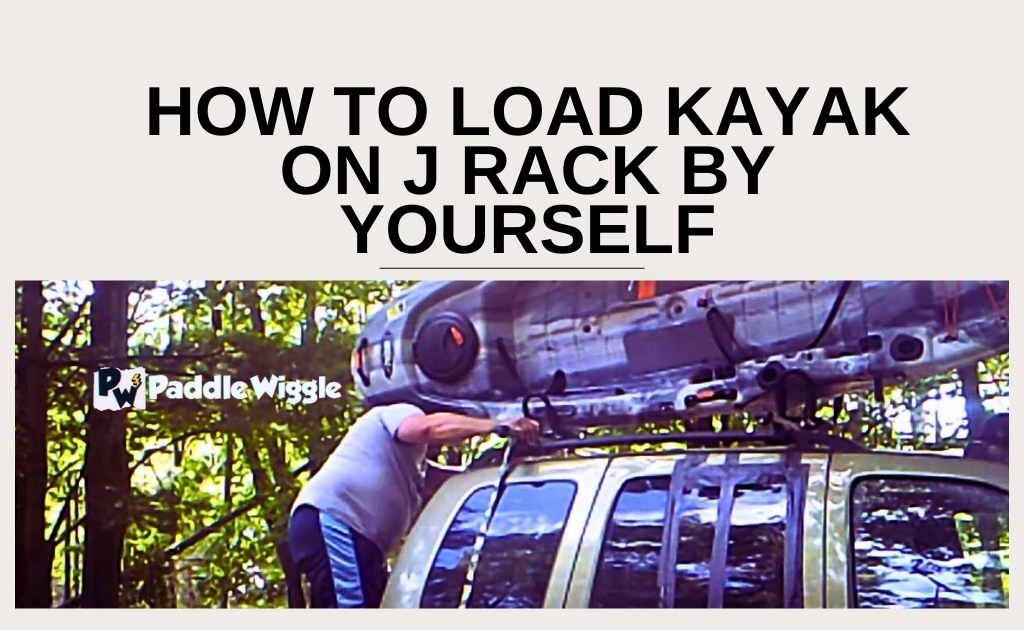Kayaking is more than just a recreational activity – it’s an exhilarating adventure that brings you closer to the beauty of nature while testing your skills on the water. However, to truly unlock the joys and get the utmost from this adventure, it’s crucial to master proper kayaking form and techniques.
While the temptation to grab your kayak and head straight for the waters is strong, have you ever considered how to paddle a kayak properly?
Proper kayak paddling involves a harmonious blend of technique and finesse. It’s an art that includes securing your grip, engaging your core, and rotating your torso for power.
In this guide, we’ll explore proper kayaking form, covering everything from how to hold the paddle to the right way to position your body. Plus, we’ll delve into advanced techniques that will make your time on the water even more enjoyable.
Contents
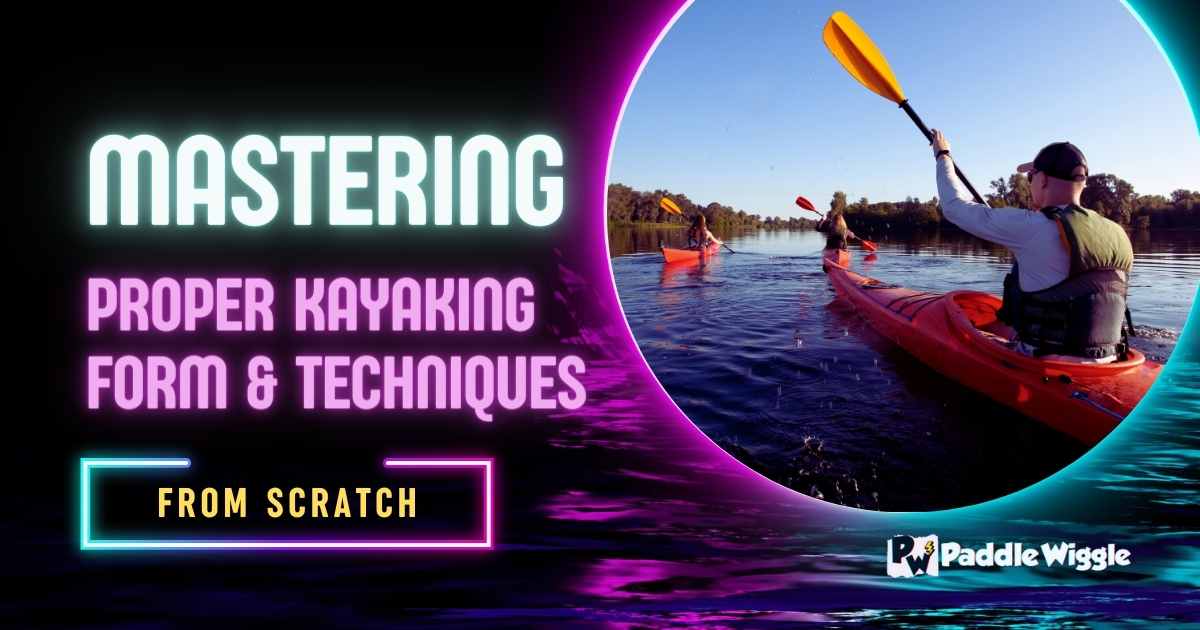

Beginner’s Guide To Proper Kayaking Form
Kayaking is a great way to enjoy the outdoors and get some exercise, but it can be daunting if you’ve never tried it before.
In this section:
Maintaining Balance And Stability In A Kayak
Maintaining balance and stability while Kayaking is vital, especially if you’re new to the activity. To ensure a seamless and enjoyable experience on the water, follow these fundamental guidelines to stay upright:
Find Your Center Of Gravity
Imagine your kayak as an extension of your body. As you sit, aim to distribute your weight evenly between the kayak’s bow (front) and stern (back). This equilibrium ensures that the kayak remains balanced on the water’s surface.
Proper Foot Placement
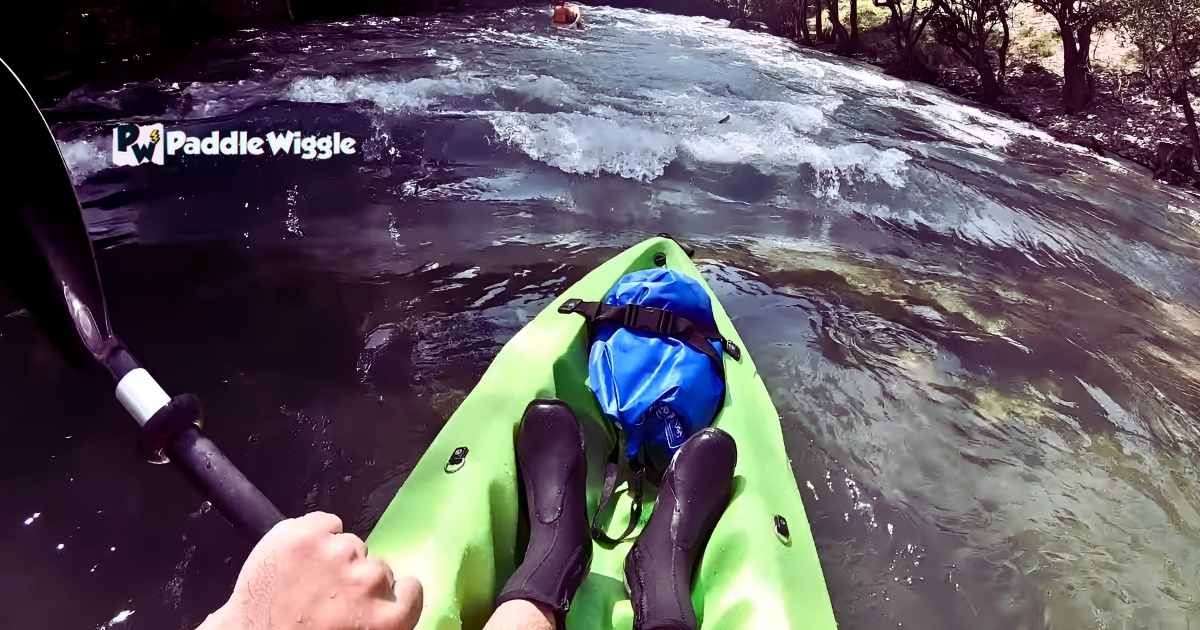

Your feet are more than just passengers inside the kayak; they are key to maintaining stability. Position them on the foot pegs or braces provided by the kayak, ensuring they’re flat and supported. Slightly bend your knees to establish a dynamic stance that aids in control and balance.
Engage Your Core
Your core muscles are the anchors of stability. Sit upright, allowing your spine to align naturally, and activate your core by gently contracting your abdominal muscles. This engagement supports your posture and provides a solid foundation for balance.
Paddle In Parallel
As you paddle, the coordination of your arms is vital. Aim to move both arms symmetrically through the water, ensuring that the paddle remains parallel to the water’s surface. This even distribution of force prevents sudden imbalances that could lead to tipping.
Practice Bracing Techniques
Bracing is your lifeline against potential tipping or capsizing. Utilize your paddle as a support system for maintaining balance. For instance, the low brace involves placing one blade flat on the water’s surface, while the high brace entails keeping one arm extended with the paddle at an angle, providing stability.
For advanced balance, practice sculling—a side-to-side paddle motion that helps maintain equilibrium.
Correct Body Posture And Positioning For Beginners
Proper body posture is essential not only for comfort but also for efficient paddling techniques. It’s the very foundation upon which your efficient paddling technique is built.
Here’s how beginners can achieve correct body posture while kayaking:
Erect Posture For Balance
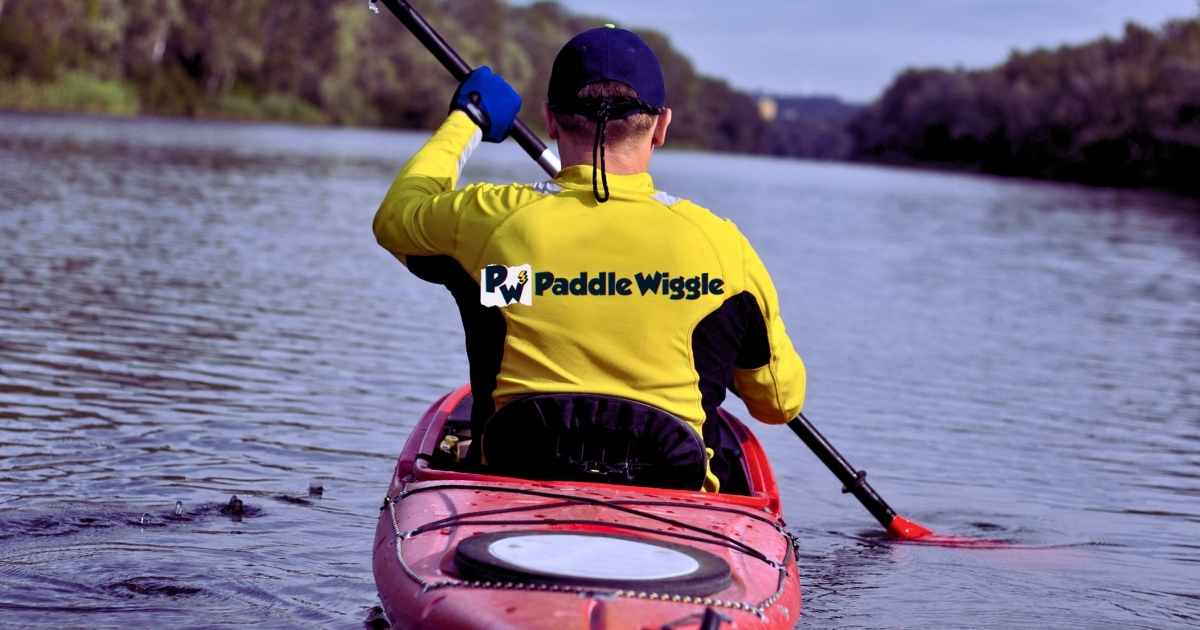

The first principle is straightforward – sit up straight. While it might be tempting to lounge or lean back, doing so can compromise your equilibrium and challenge maneuvering your kayak. Maintain a consistent upright position throughout your kayaking adventure to ensure stability.
Shoulder Relaxation For Endurance
Tension in your shoulders can lead to fatigue and discomfort over time. As you grip the paddle, remember to keep your shoulders relaxed. This not only conserves energy but also prevents strain on this pivotal joint.
Engaging Your Core For Torso Rotation
Paddling isn’t just about your arms – it’s a coordinated effort involving your entire upper body. Rather than relying solely on arm strength, focus on rotating your torso as you paddle. Engage your core muscles to facilitate this movement, channeling power from your center to the paddle.
Grip With Gentle Assurance
The way you hold your paddle can impact your performance and comfort. Avoid the urge to grip the paddle with a vice-like hold. Instead, aim for a relaxed grip that allows you to maintain control without straining your hands or forearms.
Adjust The Seat If Necessary
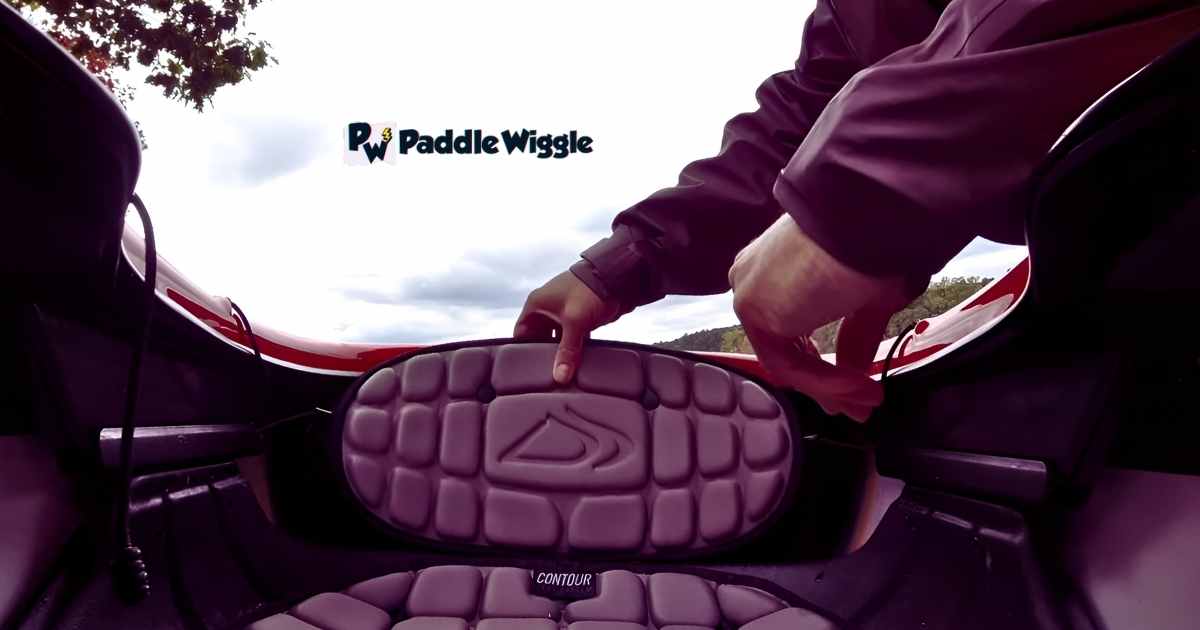

Different kayaks come with varied seat designs. Adjust your kayak seat according to your needs to ensure a comfortable ride. A properly adjusted seat provides optimal support to your back, enhancing both comfort and control.
Understanding The Role Of Core Muscles In Kayaking
Your core muscles are key players. They provide stability, power, and balance throughout each stroke. Here’s why they matter:
Power Generation Mastery
Picture your torso as the engine room of your kayak journey. The rotation of your torso serves as the primary generator of power with each paddle stroke. When your core muscles engage, they facilitate the seamless transfer of energy from your upper body to the paddle. This orchestrated energy flow propels you forward efficiently, minimizing wastage and maximizing propulsion.
Balance Sculptor
As you navigate the water’s movements, your core steps up to keep you steady. It’s like having a balance guardian. When you twist, lean, or encounter waves, your core makes sure you stay upright and in control. This stability isn’t just about keeping you upright; it’s about empowering your every movement on the water.
Sentinel Of Injury Prevention
Having a strong core is like having a bodyguard for your muscles. When your core is strong, it helps prevent other muscles from getting strained or injured. It’s like your core says, “I’ve got your back” and takes some of the load.
Endurance Amplification
On those longer kayaking trips, your core is like your endurance booster. It takes some of the workload off other muscles, ensuring they don’t tire too quickly. With a strong core, you can keep going for longer and enjoy your adventure more.
Basic Techniques For Paddling A Kayak
Paddling a kayak is relatively easy and only requires a few basic techniques. However, mastering the basic techniques lays the foundation for a rewarding and controlled experience. So, we’ve included a concise guide to the basic techniques that will set you on the right course.
In this section:
Grip, Power, And Precision: The Art Of Holding A Kayak Paddle
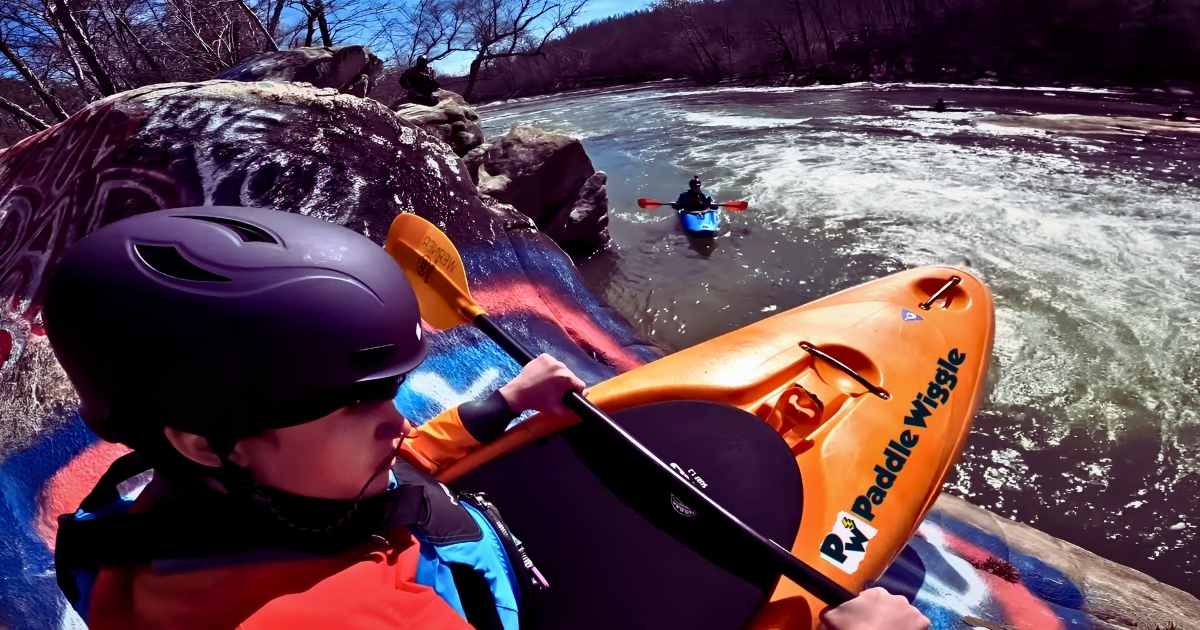

In Kayaking, your paddle isn’t just a tool; it’s part of your journey’s rhythm. Holding it right isn’t just about technique; it’s the dance of balance, power, and efficiency. Let’s dive in:
Here’s the secret to perfecting it:
Loose Grip, Solid Control: Flexibility Matters
Begin your paddle ballet with the grip – not too tight or loose. Imagine your fingers are dancers, ready to move in harmony with the water’s cadence. Grip the shaft of the paddle with a loose hold, a touch that allows your fingers to flex.
This isn’t just about control; it’s about creating a symphony of flexibility, a responsive connection between your hands and the water.
The Measure Of Alignment: The Equilibrium Of Width
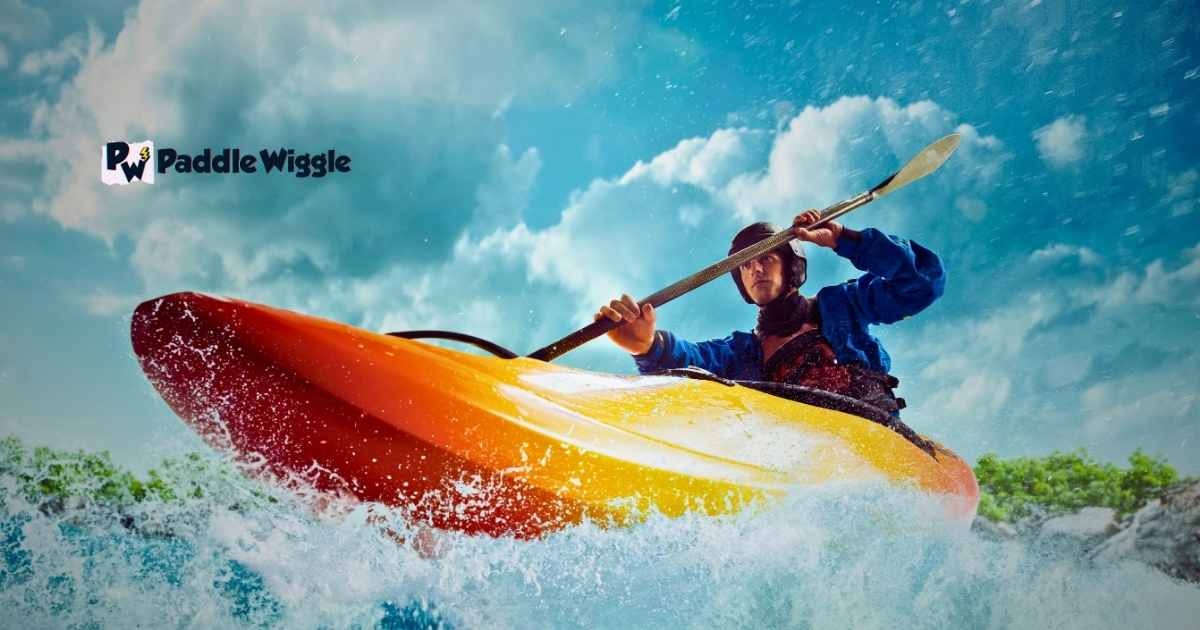

Position your hands shoulder-width apart – not too close, not too far. This width is the equilibrium that balances your strokes, allowing for symmetry in motion. Your hands are the architects of your journey, and their alignment sets the foundation for every stroke you make.
Thumbs Aloft: The Emblem Of Power
Both thumbs face upwards – not just a gesture but an emblem of power. Imagine your thumbs are the guardians of precision, ensuring that every stroke is purposeful and intentional. This gesture aligns your wrists, a key to ergonomic efficiency. Your thumbs guide the way like stars in the kayaker’s sky.
To Avoid Common Pitfalls, Pay Heed To The Subtle Details
Loose Grip, Taut Advantage: Avoid holding the paddle too tightly. A clenched grip strains muscles and dampens the symphony of your strokes. Embrace a loose grip that leads to taut precision and responsive control.
Flexibility, not Fatigue: A loose grip isn’t just about control; it’s about endurance. A rigid grip invites fatigue, and a loose grip offers resilience. Imagine your fingers as dancers, fluid and graceful.
Entering And Exiting A Kayak Safely
Properly entering and exiting are two crucial steps in kayaking. It’s the gateway to your kayaking journey. Here’s the easiest way you can do that:
Entering The Kayak: A Choreographed Ballet Of Balance
Envision the moment – the water’s edge, the kayak poised, and you, the dancer, poised to embrace the aquatic stage. Entering a kayak is not just a physical action; it’s a balletic fusion of technique and elegance.
Each movement is a note, and together, they create a symphony of entry:
#1 Positioning The Kayak: The Prelude Of Precision
It’s the first thing that you need to care about. Parallel to the water’s edge, it rests, its hull caressed by the water’s embrace. Immersing gently creates a secure foundation, the stage for your entry ballet.
#2 Approach From The Side
Stand beside your kayak, a sentinel of confidence. Feet planted shoulder-width apart, your body faces the kayak’s center. This stance is a prelude to the choreography that follows – a silent assurance that you’re in perfect sync with the rhythm of your craft.
#3 Lower Yourself Down
Kneeling is not a mere movement; it’s a dance, a measured descent like a feather’s fall. Lowering yourself is akin to a dancer’s plié, a graceful bend that echoes in the water’s ripples. With one hand delicately gracing the cockpit rim, you form a connection, a bridge between you and the kayak’s embrace.
#4 Slide Into Position: Completing The Sequence
Glide your legs into the cockpit’s waiting embrace, a fusion of movement and precision. Like the final pieces of a puzzle, your legs align straight and centered, harmonizing with the kayak’s form. It’s the embodiment of fitting, aligning, and embracing with seamless grace.
#5 Sit Upright: The Crescendo Of Posture
Your weight transitions, a delicate pirouette onto your buttocks. Aligning with the kayak’s contours, you sit tall, like a conductor poised to lead an orchestra. Your posture is a reflection of readiness, a poised conductor ready to guide the kayak’s movements through the watery symphony.
Exiting The Kayak: A Choreography Of Return To Solid Ground
Picture the crescendo of your kayaking venture – the shore beckoning, a platform awaiting your arrival. Exiting the kayak is a performance in itself, a choreographed navigation back to solid ground. Let’s delve into this graceful sequence:
Anticipating Departure: Prelude To The Epilogue
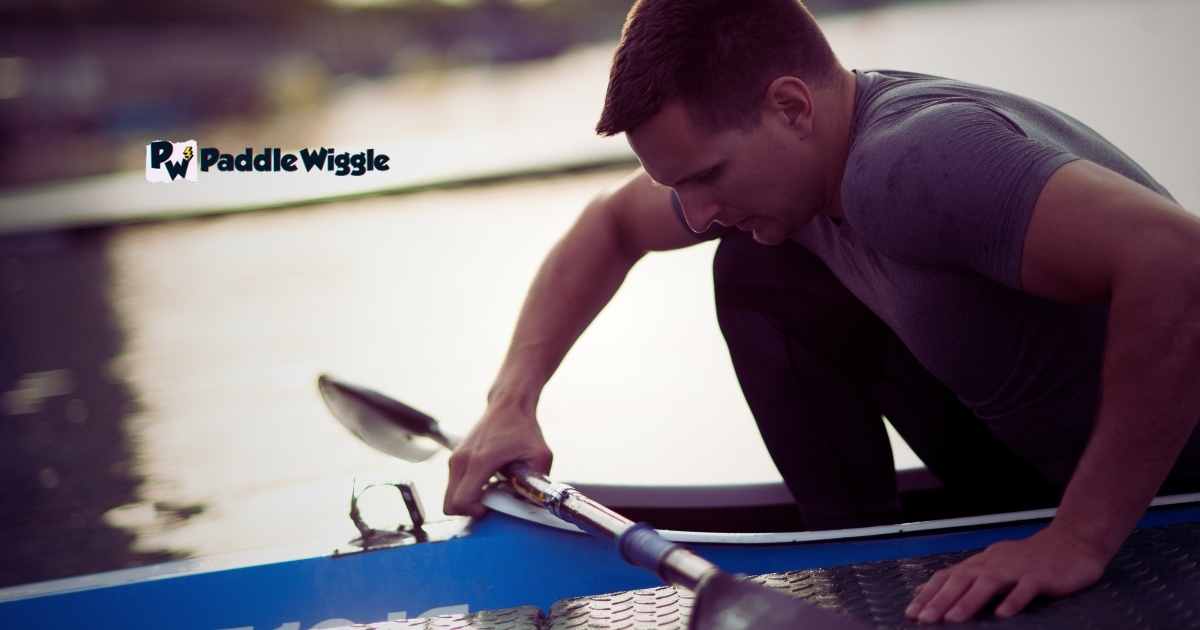

As your kayak nears its destination – the shore or a stable platform – a sense of anticipation blooms. This is your plot twist, where the aquatic narrative transitions to a new chapter. It’s a chapter that promises a safe and secure return, like the denouement of a captivating tale.
Aligning With Purpose: The Strategic Pivot
In tandem with the approaching climax, turn your kayak to face the shore or platform. This alignment is more than just physical – it’s a symbolic gesture of harmony, preparing you for the subsequent sequence. As your kayak pivots, it’s as if your journey’s script aligns with your exit’s intentions.
The Elegant Unveiling: An Artistic Initiation
Commence the exit ballet by gently lifting one leg out of the cockpit. Much like a performer’s touch on the stage’s edge, your hands caress the cockpit rim. It’s a connection that bridges the aquatic realm with the land, a seamless transition that mirrors a performer stepping onto the stage.
A Fluid Transition: The Dance Of Symmetry
The continuation of the exit unfolds like a fluid choreography. Your second leg follows suit, like a dancer transitioning to the next movement in the routine. As both feet find solid ground, it’s the pinnacle where water and land meet – a culmination of your aquatic journey, executed with the grace of a seasoned performer.
Rising With Dignity: The Standing Ovation
Standing up marks the denouement, a deliberate and dignified rise. Your hands on either side of the cockpit rim provide stability, much like a curtain call at the end of a theatrical performance. This is your final bow to the waters, an acknowledgment of the symphony shared, a nod to the journey undertaken.
Launching A Kayak: Crafting The First Stroke Of Adventure
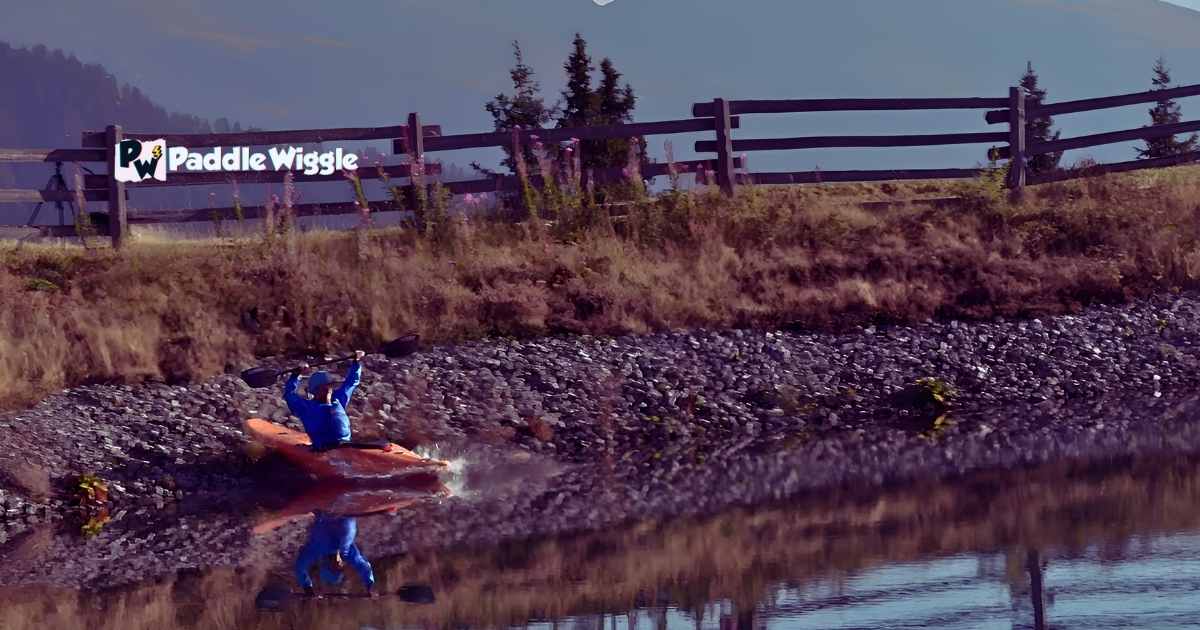

Imagine the water’s edge, a portal to uncharted waters, and your kayak as the vessel that carries your curiosity into the unknown. Launching a kayak is not just a practical task; it’s the overture to a symphony of exploration.
Let’s immerse ourselves in the intricacies of this artful beginning:
#1. Choosing The Perfect Prelude: Selecting The Launch Site
Begin your kayaking sonata with careful consideration. Seek out an appropriate launch site that mirrors your kayak’s purpose. Look for gentle slopes that gracefully embrace calm waters, the stage where your kayak will embark on its aquatic journey. Steer clear of rocky, uneven terrain, for the launch is the prelude to a smooth voyage.
#2. Positioning The Kayak
Position your kayak as though it were a canvas ready for the artist’s touch. Parallel to the water’s edge, it rests, awaiting your orchestration. Ensuring it faces the direction of your dreams, you set the compass of your adventure – a direction that beckons you to follow.
#3. The Stance Of Intention: A Prelude To Motion
Stand beside your kayak with intention, your body a reflection of readiness. Like a performer waiting in the wings, one foot slightly forward and the other slightly behind, this stance anchors you to the ground while inviting motion. It’s the stance that breathes life into the impending action.
#4. Grasping The Realm: A Connection To Begin
As you stand, a hand reaches out to grasp the cockpit rim, a tactile connection between you and your vessel. This grip isn’t just physical; it’s symbolic – an affirmation of your readiness to navigate the waters ahead. Your other hand cradles the paddle, a silent partner in this aquatic dance.
#5. The Launch Rhapsody: The Birth Of Movement
And then, the moment arrives. With your hand push, the kayak is set free from the shore’s embrace. The water’s call becomes irresistible, and as your vessel glides, you slide seamlessly into the cockpit, legs straight and centered. It’s a motion that feels like the first note of a melody – a moment of perfect harmony with nature.
Navigating The Waters With Paddle Strokes: A Deep Dive
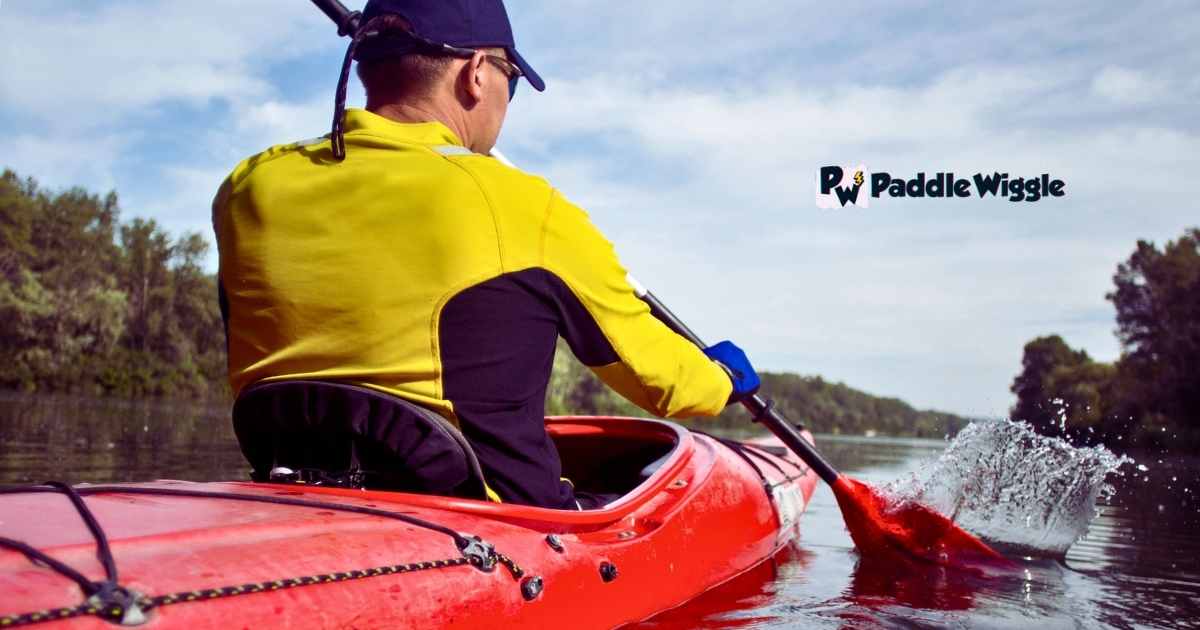

Exploring the different types of paddle strokes used in Kayaking unveils a world of technique and finesse that can transform your kayaking experience. Let’s dive deep into the intricacies of these strokes:
Forward Stroke Technique – The Propulsion Elegance
The forward stroke is the heartbeat of Kayaking, propelling you gracefully forward. To execute this stroke with precision, start by sitting up straight, and anchoring yourself in the kayak. Grip the paddle firmly with hands shoulder-width apart, aligning your knuckles with the blade angle. Feel the water’s embrace as you immerse one blade near your toes.
Simultaneously, engage your core and torso, pushing with the opposite hand. This orchestrated motion channels power from your core through your arms, driving you ahead smoothly and efficiently.
Turning Strokes – The Dance of Direction
Turning strokes are your dance partners when it comes to maneuvering through the water’s intricacies.
Let’s explore three key turning strokes:
Sweep Stroke – Sculpting Curves
Picture the fluid motion of tracing wide, curving lines on the water’s surface. The sweep stroke empowers you to create these turns, allowing your kayak to navigate with elegance. Begin by placing one paddle blade near your toes and execute a sweeping movement that arcs outward, forming a gentle semicircle from the side of the kayak to the back.
As you feel the water’s push against the paddle, you’ll guide your kayak’s pivot smoothly, using the water’s resistance to direct your course.
Draw Stroke – Side-To-Side Elegance
The draw stroke is your lateral movement maestro. Imagine pulling yourself gracefully towards an object or changing your course. Position one blade perpendicular to your kayak’s side, near the hull. Pull the water towards you while maintaining proximity to the kayak’s surface. This stroke elegantly shifts your kayak’s direction.
Rudder Strokes – The Art Of Control
Some kayaks come equipped with rudders that offer fine-tuned control. These specialized appendages respond to foot pedal manipulation.
A slight pedal adjustment subtly shifts your kayak’s orientation. The rudder strokes are your nuanced maneuvers, adding an extra layer of precision to your kayaking journey.
Advanced Kayak Paddling Techniques For Beginners To Kayak Properly
If you want to take your Kayaking to the next level, you need to learn some advanced kayak paddling techniques. These techniques can help beginners to kayak properly and enjoy the sport more.
In this section:
Edging The Kayak For Better Maneuverability
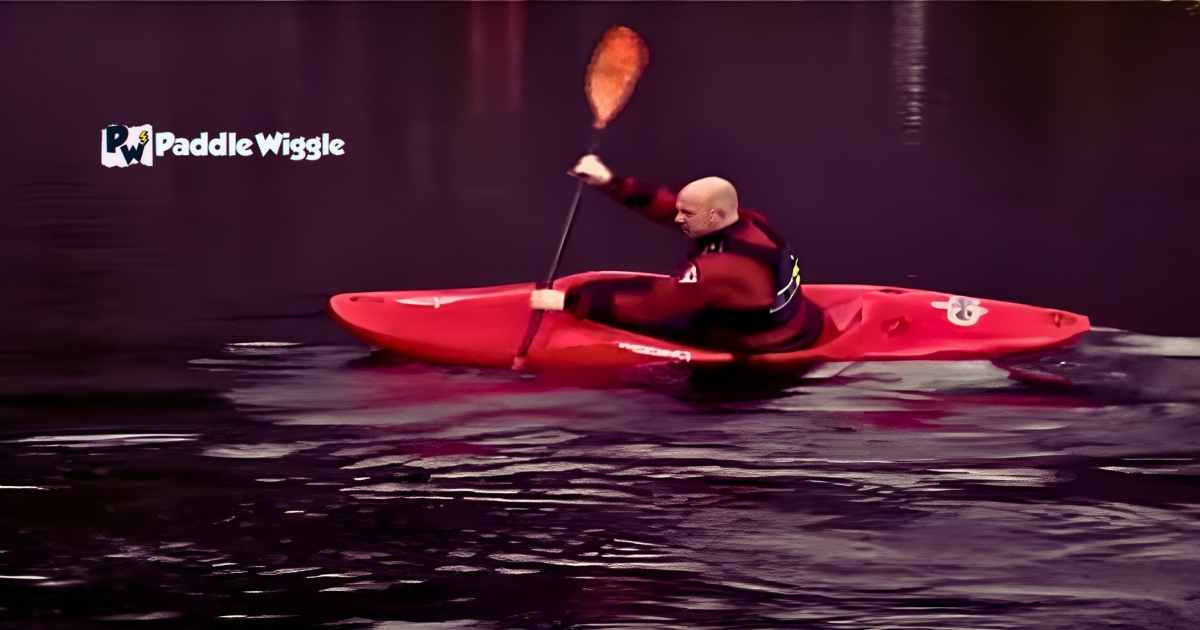

Edging is an essential skill that can elevate your kayaking experience to new heights, enabling you to navigate with unparalleled accuracy and ease. By perfecting the art of edging, you’ll attain greater command over your kayak and be empowered to explore the water in novel and exhilarating ways.
Let’s plunge into the depths of this technique, exploring its nuances and benefits:
Weight Distribution: The Harmonious Shift
Begin your edging journey with a shift in your body’s equilibrium. Imagine a waltz with the water – gracefully move your body weight towards the side you intend to edge. While doing so, maintain the alignment of your upper body with the kayak’s center.
This orchestrated shift lowers one side of the kayak into the water, adding a touch of stability and setting the stage for fluid turns.
Hip Movement: The Choreography Of Control
Engage your core muscles; they’re the conductors of this symphony. Initiate the edging motion with your hips as if your pelvis is guiding the kayak’s every move. Imagine you’re painting with your body, tilting your pelvis towards the direction of your intent.
This controlled tilt dictates the degree of edging, giving you the reins to navigate the waters with precision and flair.
Practice Gradually: The Evolution Of Mastery
Master the art of edging to amplify control and maneuverability in your kayak, unlocking thrilling water exploration. From gentle tilts in calm waters to dynamic challenges, practice gradually for mastery evolution.
As your confidence grows, progress to more challenging environments – rivers with currents that mimic a challenging brushstroke or ocean waves that demand finesse.
Each lean shapes precision and unleashes controlled exhilaration.
Efficient Roll Recovery
Capsizing is an inevitable part of Kayaking, especially for beginners learning advanced techniques. However, mastering roll recovery can help prevent panic and ensure a swift return to an upright position without leaving the boat.
Here’s a step-by-step guide to performing an efficient roll recovery:
#1 Stay Calm: The Anchor Of Composure
As the water embraces you, take a breath – not of panic, but of composure. Capsizing is a part of the kayaking journey, a test of your mettle. Remember that staying calm in this unexpected underwater realm is your greatest asset. Panic is the undertow that can pull you away from efficient technique; composure is your anchor, keeping you steady and in control.
#2 Set-Up Position: The Foundation Of Recovery
In the underwater realm, your body becomes your compass to navigate the roll recovery. Tuck forward into a compact, fetal-like position. Bring your knees close to your chest as your body curls into itself. One hand gracefully grips the paddle shaft above your head. This is your set-up position, a foundational stance connecting you to your kayak and your intention to return upright.
#3 Initiating The Roll: The Dance Of Precision
With the set-up position in place, it’s time for the graceful initiation of the roll. Your body, once immersed, becomes a conductor, orchestrating the movement. Initiate a hip snap – a precise, dynamic motion where your hips sway towards the surface, propelling your kayak back to its upright posture. This motion is a dance between your body and the water, a choreography of control and intention.
#4 Finishing The Arc: The Ascent To Upright
As your kayak responds to the call of the roll, ascend with it. Your body’s movement is like a brushstroke that paints your return to the surface—the paddle, an extension of your will, aids in this ascent. Visualize a fluid arc, your kayak moving from the inverted to the upright, like a phoenix rising from the depths.
#5 Breathe, Reclaim, Reflect: The Emergence
As the kayak rights itself, remember to breathe – not just the physical breath, but the metaphorical breath of triumph. Reflect on the roll recovery’s success, a testament to your skill and resilience. Reclaim your equilibrium in body and spirit, knowing that mastery of roll recovery is an empowering ability that transforms challenges into conquerable moments.
Executing Bracing: The Mastery Of Stability In Turbulent Waters
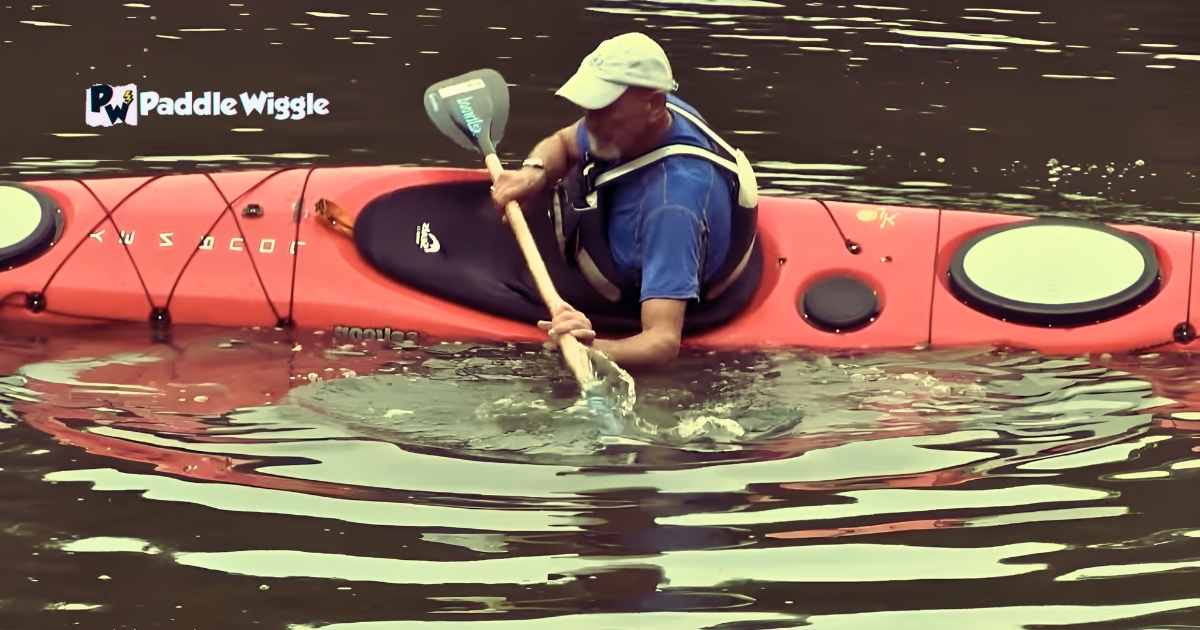

Bracing is your shield against the capricious nature of the water. It’s the bridge between stability and unpredictability.
It involves using your paddle blade as a support system to prevent capsizing and maintain balance.
In addition to basic bracing, there are several variations of this technique that can enhance stability in different scenarios:
High Brace: The Anthem Of Quick Reaction
Raise your paddle high above your head, a gesture that echoes preparedness. The flat part of the blade graces the water’s surface, a shield against turbulent waters. Engage your core, using this position as a counterbalance against the water’s force. This is your anthem for quick reactions, a safeguard against unexpected waves.
Low Brace: The Versatile Overture
The low brace takes center stage in moments of turns and submerged obstacles. Place one hand low on the shaft near its end, submerging the blade at an angle away from you. This is your versatile overture – a steady hand that maintains stability amidst dynamic maneuvers.
Sculling Brace: The Elegance Of Continuity
The sculling brace is your elegantly continuous support for challenges like tidal currents, and ocean swells. Position yourself perpendicular to the waves, a maestro ready to conduct. Rotate your torso as your paddle moves back and forth just below the water’s surface, an arc-like motion that crafts stability in the face of adversity.
Slowing Down And Stopping A Kayak: With The Reverse Stroke
Having control in Kayaking is crucial. The reverse stroke technique is your answer if you’re looking for a way to slow down and stop smoothly. This skill allows you to confidently navigate your kayak, ensuring you can turn your momentum into controlled stops.
Here are a few things that you need to know:
Power In Reverse: The Symphony Of Technique
To initiate the reverse stroke, pivot your paddle so that the concave side faces you. This is your artist’s palette, ready to blend control with technique. Submerge the blade fully into the water near your toes. Unlike the forward stroke, where you’d push the water behind you, here, you’re pulling the water towards you. Your goal isn’t propulsion but precision.
The Arc Of Control: The Dance Of Deceleration
As the blade submerges, it’s as if you’re drawing an arc of control. With a deliberate sweep, pull the blade towards your hips. Imagine you’re sculpting the water, creating a curve that defies speed. This is the dance of deceleration – a controlled movement that counteracts momentum and slows your kayak’s advance.
Meeting Resistance: The Symphony Of Feedback
Feel the resistance as the blade engages with the water. This isn’t a struggle; it’s a dialogue. The water responds to your intention, becoming an extension of your will. As the blade slices through, it crafts a symphony of feedback – vibrations that travel up the paddle shaft, reaching your hands like the vibrations of a musical note.
Confidence In Mastery: The Culmination Of Control
The reverse stroke isn’t just about stopping; it’s about asserting mastery over your kayak. As you perfect this technique, you gain confidence to navigate tight spaces, halt abruptly, or maneuver with precision. The reverse stroke is more than a technique; it’s your ticket to confidence in control.
Practice, Refine, Master: The Evolution Of Technique
Practice in calm waters, then challenge yourself in various conditions. As you gain experience, you’ll discover the subtleties of this stroke – how the angle, the depth, and the timing create different effects. With each practice session, you’re adding layers to your mastery, transforming a stroke into an art form.
Adjusting The Footrests And Backrest For Optimal Comfort


It’s essential to adjust the footrests and backrests to suit your body to enhance comfort during long kayaking sessions. Customizing comfort isn’t just about indulgence; it’s key to fueling your energy.
Here’s how you can achieve optimal comfort:
Footrests: Sculpting Your Stance
Footrests in a kayak stabilize your stance, improve connection, and provide better control and comfort throughout your journey. Adjusting them molds your posture for more efficient paddling. They are an essential element that harmonizes your body with the kayak.
- Bent Knees, Empowered Strokes: Begin by positioning the footrests so that your knees are slightly bent when your feet rest on them. This isn’t just a posture; it’s a stance of empowerment. Bent knees allow for better control, transforming your strokes into deliberate movements.
- The Balance Equation: Imagine your kayak as a scale and your legs as the counterweights. Proper footrest adjustment balances the load, preventing unnecessary strain on your legs. This balance isn’t just about physical comfort but the equilibrium that sustains long journeys.
- Flexibility in Power: Bent knees aren’t just about comfort but about harnessing power. Imagine your legs are springs, coiled and ready to push against the footrests. Flexibility here isn’t a concession; it’s a source of strength.
Backrest: The Elegance Of Spinal Support
A well-adjusted backrest isn’t just about sitting; it’s about maintaining your body’s natural curvature, even in the fluid motion of Kayaking:
- The Lumbar Connection: Adjust the backrest to provide gentle support to your lower back – the lumbar curve that cradles your spine’s melody. Imagine your backrest as a conductor’s podium, elevating your posture to the perfect pitch.
- Motion Without Restraint: Your backrest isn’t a restraint; it’s a partner that aligns with your body’s rhythm. Experiment with different angles until you find the harmony between support and movement.
- Endurance Amidst Elegance: A well-supported back isn’t just about relaxation; it’s about endurance. As your back is supported, your core muscles engage with elegance, adding stability and endurance to every stroke.
Crafting Your Throne: Ergonomic Symphony
In this ergonomic symphony, you’re not just adjusting but crafting comfort. Imagine your kayak as a tailor’s workshop and adjustments as the stitches that mould the perfect fit:
- Trial and Transformation: Like a sculptor refining their work, take the time to experiment with different adjustments. Everybody is unique, that’s why you may need a bit of customization.
- Listen to Feedback: Your body is the most honest critic. Imagine it as a mirror reflecting comfort or discomfort. Adjustments should create a symphony of comfort, with each stroke being a note of satisfaction.
- The Seamless Experience: As you paddle, imagine your kayak as an extension of your body. Properly adjusted footrests and backrests make your kayak an effortless extension, making long sessions feel seamless.
Learn More
What Are The Consequences Of Improper Kayaking Form?
Improper kayaking form can increase fatigue, muscle strain, and injuries. It may also hinder your ability to maneuver the kayak effectively and control it in different water conditions.
Should You Go Kayaking Alone Without Prior Experience?
While possible, it’s recommended for beginners to kayak with experienced individuals or take professional training to ensure safety and proper technique.
Should I Invest In Professional Lessons For Learning Proper Kayaking Form?
Professional lessons can be highly beneficial for beginners looking to learn proper kayaking form efficiently and safely. Instructors can provide personalized guidance, correct mistakes early on, and teach essential techniques to enhance your overall paddling experience.
Final Words
To sum up, this guide has endeavored to shed light on the intricacies of proper kayaking form and techniques. As you delve into the world of Kayaking, remember that these insights are merely stepping stones on your journey of discovery.
Each paddle stroke, each adjustment of form, holds the potential to bring you closer to the beauty of the water and the art of Kayaking. Now, you can let the waves be your rhythm and take your kayak where you go!

